

At Country Creatures we are proud of the British craftsmen and designers that we use in the refurbishment of our properties. The Double Red Duke (due to open in February 2021) is undergoing a major renovation programme utilising the very best of British manufacturing. We work with people we know and trust. Our Country Creatures Design Series showcases the skill and incredible workmanship of these brilliant companies. For part four in our series we are shining a spotlight on Rapture and Wright, an artisanal textile producer who are supplying wallpaper at the Double Red Duke.
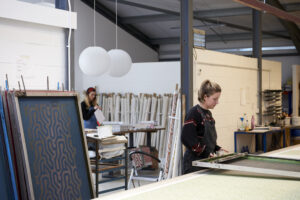
Artisans at heart, Peter Thwaites and Rebecca Aird, with a background in graphic design and illustration, dreamed of turning their brimming portfolio of patterns into a collection of fabrics and wallpapers. Confident that they could save the dwindling British textile industry by themselves, they built a hand printing table in a leaky barn and sought out the best suppliers across the British Isles.At the heart of the business is the workshop, one of the few remaining handprint studios in the UK. This is where ideas become designs and those designs become fabrics and wallpapers.
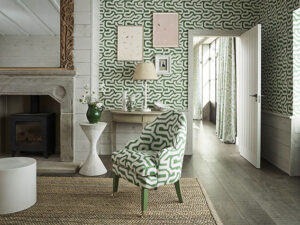
We grabbed a few minutes with Peter, the joint founder and owner of the company to ask him a few questions.
After studying illustration at Art College I moved to Glasgow in the early 90’s, and shared a studio with textile designers Timorous Beasties. I spent the following years painting film and theatre sets which led to commissions from designers to create innovative decorative finishes for interior schemes.
While researching the work of the Omega workshop for a commission, I wondered whether there could be a gap in the market for fabrics and wallpapers that had a provenance, something tangible, reflecting the hand of the maker, a counterbalance to the impersonal mass production that had taken over. At the time, “craft” was still an embarrassing word in design circles.In 2004, Rebecca and I started Rapture & Wright.Our dream was to create a small artisan workshop.
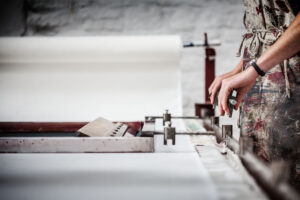
Building on my experience gained in Glasgow, we experimented, adapting and developing age old techniques to produce our own handprinted fabrics and wallpapers in house. Hand printing is hard physical work, but the quality and depth of colour, is unlike anything machine produced. It also allows us to offer bespoke colour options on all our designs.
Inspired by heroes such as the Arts & Crafts movement, our aim was two fold.
The creation of our new print studio and innovative ecological treatment system, designed specifically to break down print waste within the natural environment is the first of its kind in the world.
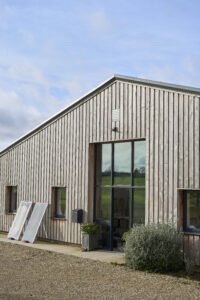
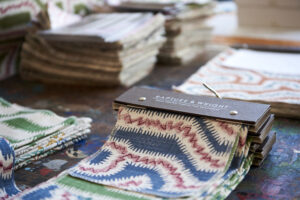
For example the beginnings of our new design Moorish Maze can be traced back to artist Richard Long’s 1994 work “White River Line.” A small photo of this extraordinary piece has been pinned to the inspiration board in our studio for several years. I kept returning to it, but couldn’t get it to work, until this year, when I combined it with some other Lino prints I had developed.
Once we are both happy with the basic design, we create an art work and make up some test screens. If all goes to plan we might do about a hundred small colour strike offs onto different base cloths, and see how they work with our existing designs and on furniture etc. The design doesn’t really come alive until it’s printed onto the cloth. At any of the stages between initial sketch and final strike off, the design can fail. We probably start with about fifteen initial ideas. These get whittled down to about three. Creating everything in-house, allows us to go back and forth between drawing desk, computer and print table until we are happy with the final outcome.
For production, the wallpaper or base fabric is rolled out onto the print table and secured. Stops are set precisely to position the screen / pattern repeat. A squeegee, passed between two printers, one on each side of the print table, is used to force the ink through the screen mesh onto the fabric or paper below, one screen for each colour. Once all the colours are printed and the ink is dry, the fabric or paper is rolled and the process starts again. It’s a time consuming process. We print between 50 – 150 meters a day on our 15m table.